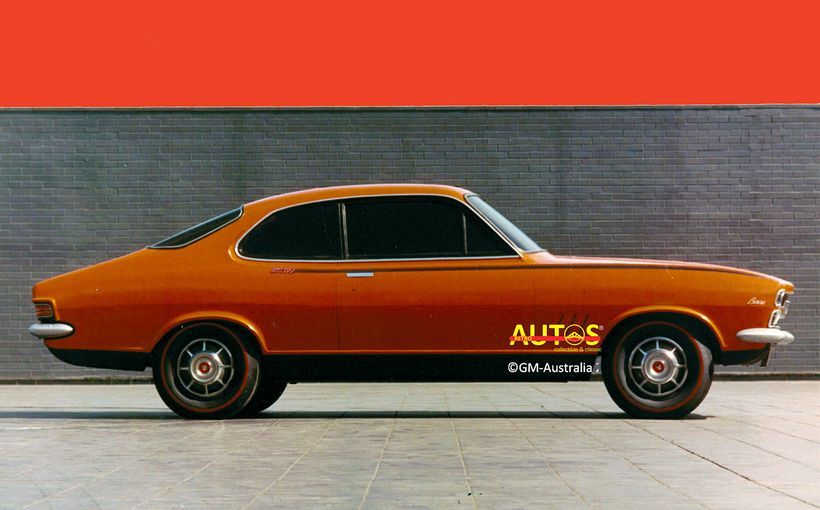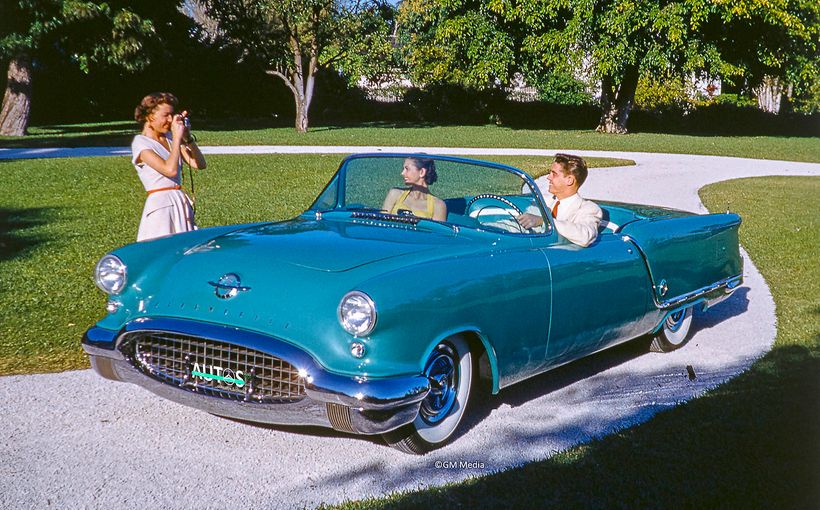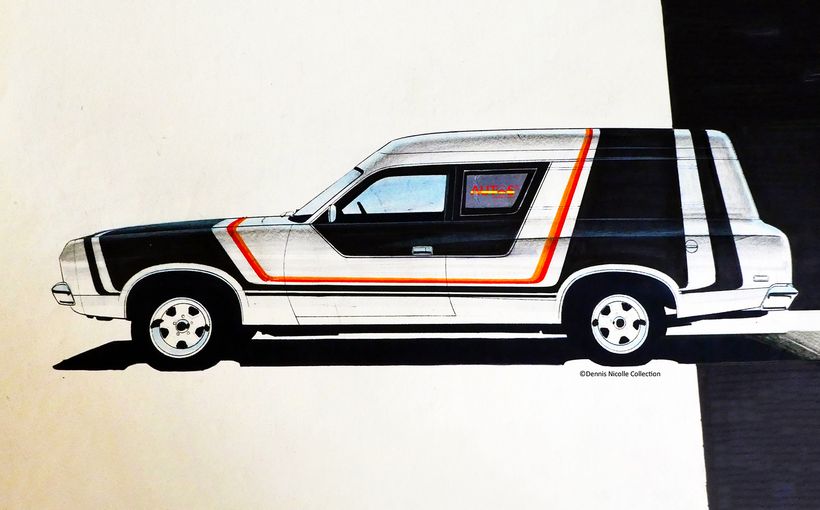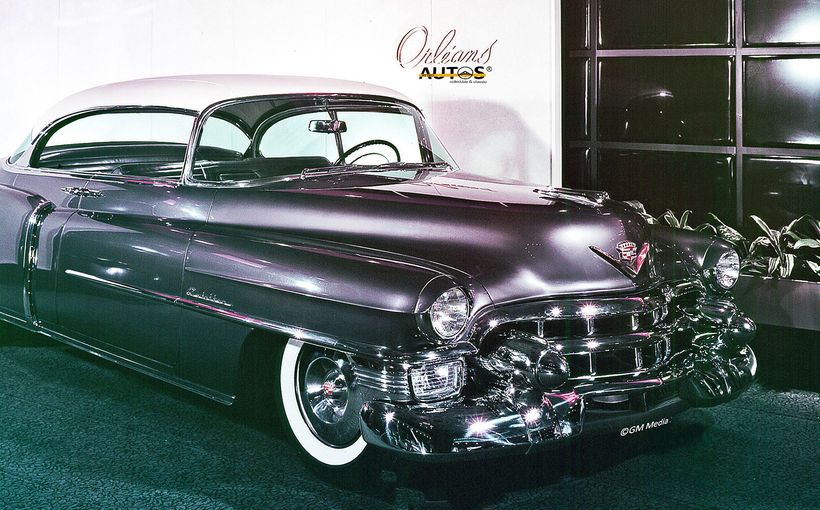Grilles you NEVER saw: Holden, Falcon, Valiant, Mustang, Plymouth, Ford and more

The grille is arguably the most important styling feature of a car. It is where the car meets the world, literally, head on.
Be it simple and clean, chromed and dazzling or an intricately styled combination of shapes, the grille is capable of delivering a potent message.
You might not know the exact model of BMW when you see one in the street, but you know it is a BMW from its twin oval grille, a design feature since 1933.

The upright Rolls-Royce grille conveys the marque’s global reputation for excellence which has endured for more than a century.

Jeep’s seven elongated slots, pressed out of flat sheet steel, reminds us of sacrifice and victory in a World War.

The elegant chromed bars of the 48-215 Holden capture the unlimited optimism of nation building pride.

Some grilles are so successful that they are copied, often. Lincoln’s application of a Rolls-Royce front for its 1968 Continental Mark III defined the Mark series.

Ferrari’s egg crate theme from late 1940s and early 1950s was repurposed for the 1955 Chevrolet. Compare this 1951 340 America Berlinetta and the Chevrolet styling studio line drawing from late 1953.


Get it wrong, however, and your car becomes the object of criticism and sales suffer. The 1961 Plymouth trapezoid shaped grille, designed when Virgil Exner was boss of Chrysler’s design efforts, was a key reason why the sales of its full-sized cars dropped by 25% that year. Does the Lexus grille appear similar?


And then there’s the Edsel, which quickly entered popular culture as a universally recognised visual and verbal shorthand for failure.

Grilles have a humble origin. Appearing in the early 1900s they were a simple device, devised to protect fragile radiators from road debris and minor accidents. By the early 1930s grilles had become a key identifier of a brand and make.


Automobile manufacturers designed increasingly complex and artful “faces” to differentiate their cars and ensure they were instantly recognisable to the public.


Lincoln Zephyr: From Vertical to Horizontal
It was in 1938 that a major and industry wide change occurred. Up until then, grilles were tall and slightly backward sloping, largely following the lines of the radiator hidden behind the metal shroud.

Indeed, GM’s styling supremo, Harley Earl, believed that such grilles delivered a message of power and dominance. The 1938 Lincoln Zephyr, designed by E.T. “Bob” Gregorie, rendered that thinking outdated overnight.
In his book Edsel Ford and ET Gregorie Henry Dominguez quotes Gregorie as admitting that it was a response to overheating problems in the 1936-37 models. The overheating was caused by a combination of the radiator’s placement and grille’s shape. Gregorie’s very effective solution was to place the radiator horizontally between the chassis rails and re-design the grille so that it was low and wide.


It is hard to imaging now, but this was a radical shift in the front-end visuals of an automobile. When Harley Earl saw a photo of the Lincoln, Dominguez says he exclaimed “How’d we miss that one!”. Writing about it in their book A Century of Automotive Styling, Michael Lamm and David Holls noted it “created panic at GM”. They said that Earl immediately ordered the implementation of horizontal grilles across all GM brands, beginning with the 1939 Buick.

Within two years every American car maker had pivoted their grilles 90 degrees. Some European makers resisted the trend, notably Rolls Royce and Mercedes, but eventually they too had to make the transition.


What if?
But what if Gregorie had shaped a different grille? Would his influence have been as immediate and as far reaching? A couple of surviving images from the Henry Ford Museum, dated March 1937, reveal alternative ideas Gregorie was considering for the Lincoln.


The images of Gregorie’s alternatives started me asking “what if” for the many grille designs that were never seen beyond the high security doors of design studios. Compared with what made it into production, would these alternatives have been a better choice? Would they have added to a car’s success? Or would they have been a disaster and we can be thankful they were rejected?
In this first of an occasional series of stories I take a look at the grilles we never saw, and the versions which appeared on the streets. I will leave it up to you to decide if the right decisions were made.
1959 Chevrolet: Anything Goes!
Centrally located headlights were just one of the outlandish proposals in the panic which followed GM’s stylists getting a sneak peak of the 1957 Chrysler models. The designers explored many wild ideas in their efforts to reclaim their reputation as styling leaders from Virgil Exner at Chrysler.



First Falcon: Two or Four headlights?
Over a 15 month period, 17 styling proposals were developed for the 1960 Falcon. None pleased Ford’s senior executives, so they asked two of their talented young stylists, Don De La Rossa and Gale Halderman, to see what they could create. In a couple of weeks, they delivered the definitive Falcon shape and grille. Here’s a picture of a two-sided grille which, with a few alterations, it was what appeared in showrooms in September 1959. Four headlights were never seen on any Falcon.


“Fintail” Mercedes: Upright or horizontal?
Back in 1956 when Mercedes was contemplating the styling of what would become the “fintail” model, they were undecided about the grille, as seen in these two photos. Would it be their traditional upright design or the fresher horizontal approach that mimicked the just released 300SL? They went with tradition.



VF Valiant: All about perception
Here’s an interesting idea for the VF Valiant. The slightly inboard placement of the headlights within the grille markedly changes the front-end appearance. The lights appear too close together. And yet, the same inboard location was used for the VG. The difference? The VG uses smaller rectangular lights which blend seamlessly into the horizontal theme of the grille, enhancing it, actually making the car look wider than the VF. Such are the “tricks” talented car designers use to “cheat” the eye.



LC Torana: Get the point!
The early designs for the LC Torana six cylinder included a narrow grille which widened where it met the headlights. “We called it a ‘dog-bone’,” recalls Peter Nankervis, who was the Torana studio chief at the time.
“We did a number of variations of the dog bone design and also did a few exercises trying to make the car look wider with more horizontal lines,” he says in my book series Design to Driveway.

It was John Schinella who suggested a protruding nose with a horizontally split grille. He wanted it to resemble a scaled down Pontiac GTO. The coloured bar across the grille and the way the grille was wrapped into the front fenders were all part of a strategy to visually widen the car. The wrapped section was initially much wider and longer. Rectangular headlights were also evaluated.


XW Falcon: Like a Mustang
In late 1966 Ford Australia’s styling team basically consisted of two designers, Jack Telnack and Brian Rossi. The duo worked long hours during the summer of 1966-67 to develop the XW Falcon.
That it would feature an aggressive open mouth Mustang-style grille was a product planning requirement from the outset. David M. Ford (no relation) was a product planning manager at the time and he told me that “the XW needed to be seen as Australian and rugged while still using the positive worldwide image of the Mustang.”

Telnack and Rossi considered variations of the basic grille. These photos indicate the attention to fine detail which is a hallmark of their approach to design. The duo was also working on the XR GT, XT range and ZB Fairlane at the same time as the XW, so they were extremely busy. “You have no idea how much effort, how much blood and sweat, Brian and I put into the XW project,” Jack recalled.


VK Chrysler Valiant: Bold ideas
The Chrysler design team had high hopes for a bold new grille for the VK model. But poor sales of the preceding VH and VJ combined with a lack of money locally and at Chrysler in the USA, meant those dreams came to very little. The VK was very similar to the VJ. The bigger, wider and deeper grille would have to wait for the CL model.



1974 Ford Mustang: Attempted break with tradition
These two proposals for the 1974 Mustang were an attempt to break away from the forward leaning and aggressive “wide open mouth” grille which had been a defining feature of the Mustang since its release in April 1964. And as it turned out, the 1974 model, seen here, would not break that tradition. It took until 1979 and Jack Telnack’s persistence for the Mustang’s grille to gain a wind cheating backward slant.



LH Torana: Wide open
Retired Holden design director Leo Pruneau told me that the LH Torana’s grille was originally planned to be full width, wrap around into the front fenders and bisected by the bumper bar. “We could not achieve that look because of the body engineering issues, so we compromised with a more upright opening and a wider bumper bar,” he said. It went through a couple of variations until the final version was agreed.



1962 Plymouth: Sales slow down
The 1962 Plymouth was the unfortunate outcome of a misguided downsizing of Chrysler’s full-sized cars combined with Virgil Exner’s attempt to implement a new design language called the S-Cars. It did not find favour with buyers and sales slipped another 25% on the already poor 1961 sales result. It is hard to know which is more attractive, the styling proposal or the real thing?


Ford LTD: Defining image
Ford’s P5 LTD boasted hidden headlights and when styling its replacement, the 1976 P6, the product planners were keen to continue the theme. Although it is disappointing that the hidden lights failed to make it into production, the simpler end result was one of the most distinctive grilles ever to grace an Australian car. Variations of the Rolls-Royce-esque shape became a defining feature of the LTD for the next 30 years.

FJ Holden: So many choices!
In January 1950, at GM’s design studios in Detroit, work on the FJ’s styling was well advanced. The primary focus was the grille, and twelve different proposals were developed, four of which are seen here. They are constructed of wood, cardboard and tinfoil and were fitted into the front of a surplus 48-215 that GM had at its Milford proving grounds. It took until May 1950 before a decision was made on which one would grace the front of “Australia’s Own Car” in 1953.





There will be more Grilles You Never Saw in future editions of Retroautos.Retroautos is published and written by David Burrell with passion and with pride. A special thanks to John Kyros at GM Heritage and those who I quoted for their assistance. Retroautos’ stories and images are copyrighted. Reproducing them in any format is prohibited.









